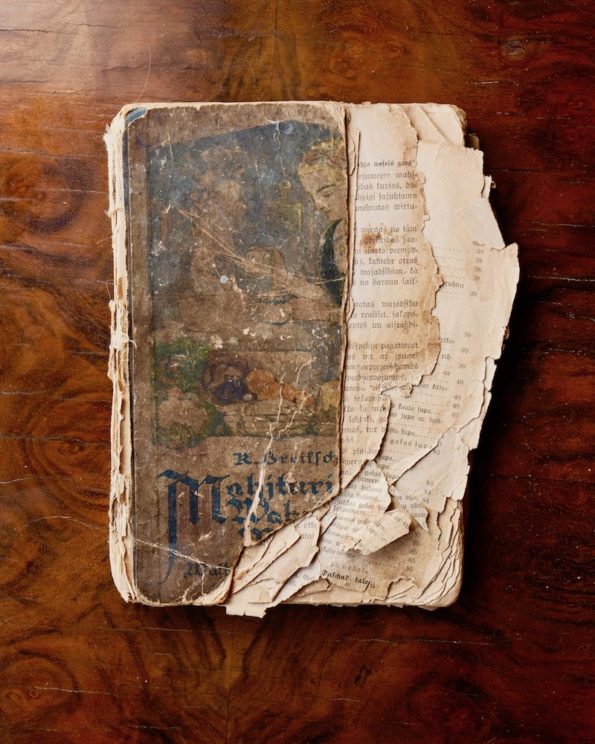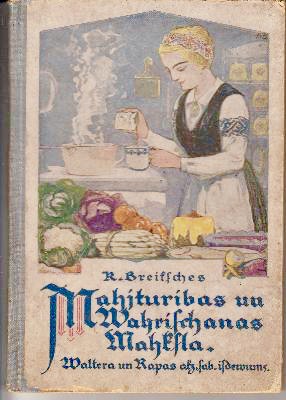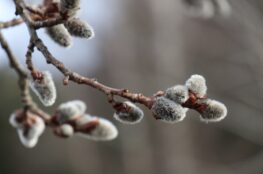You may be familiar with the premise of this project – take a classic cookbook, cook your way through it, and learn what there is to learn about yourself. Think Julie & Julia, a lighthearted, yet aspirational take on French cooking, love and life in general.
My own goal is not as grand, but just as meaningful to me. For the foreseeable future I will work my way through a cookbook that belonged to my great grandmother Alise – Kristīnes Breikšes “Mājturības un Vārīšanas Māksla” (The Art of Housekeeping and Cooking by K. Breikše).
The book was first published in 1924 with 480 recipes, while its last 5th edition was published in 1935 and contained 516 recipes.

My family owns the 2nd edition of this cookbook (in the picture), published in 1926. Most of it has survived its nearly 100 years, but you can see that it has been well used and a tad abused. My grandmother, who just celebrated her 86th birthday, remembers having this book on the shelf in the kitchen, and not being able to read it as a child; it is printed in Gothic script. In more recent times, book was republished in 2009; this time with a slightly different name “Vārīšanas un Cepšanas Māksla” and modern script. This is the edition I have with me in Australia. It checks out: author’s introduction and instructions, ingredients and methods are the same.
So here it is – 517 recipes, curiosity about how our ancestors used to eat and how cookbooks used to be written. Most importantly, it is curiosity and my possibly last chance to find out how my family ate, cooked, lived and loved. Research for the blog has started conversations with my grandmother who has opened up about both big and small things – from family relationships and her place in it to how her father would come home every day for lunch, always keeping an eye through kitchen window on his factory next door.
I hope you enjoy this cooking journey with me!





September 25, 2021
My mother’s family was forced, like so many others, to flee Latvia when the Soviets invaded the second time. They ended up in Germany in 1944 and while in a displaced persons camp in Fischbach, my grandfather learned how to set and print books. Among the books that he and others printed was a Latvian Cookbook, “Latviskā un modernā virtuve” by H. Birziņa and A. Švāgers-Vīksne, and published by “Fišbachas latviešu komiteja literātūras apgāds.” I have been trying, off and on, over five decades to translate recipes my grandmother would cook–but I struggle with the abbreviations and the fact that ingredient sizes and strength have definitely changed over the years. Add to that, of course, that I am like many first-generation descendants of refugee Latvians who never had the chance to learn the language. Any tips on how I can more easily try to “convert and update” recipes from old books, such as the one I have? Meanwhile, THANK YOU for your web site!
September 27, 2021
I love to hear my reader’s stories! I have a collection of pre-war and exile cookbooks, and I have found them to be more as a guide and less an accurate source of ingredients and methods. Many older books have chapters on measurements and techniques and they are a good place to start. Other than that, I have found the only way to “translate” is by getting your hands dirty and actually testing the recipes, just like I have started to do. By doing this, you will make sure the recipe works and measurements will actually be useful to anyone who wants to cook more traditional Latvian recipes. Good luck!